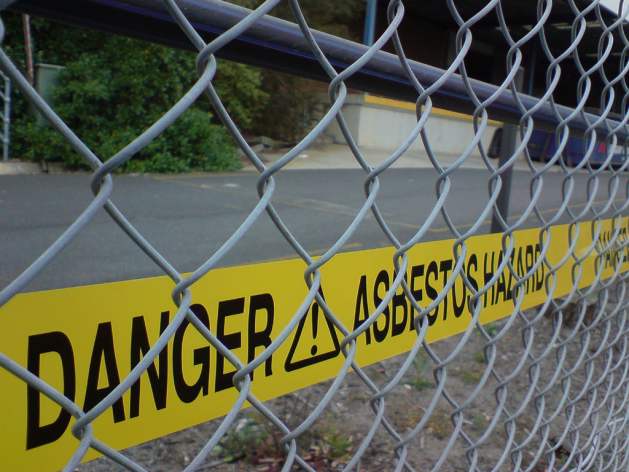How Slow Moving Asbestos Regulations Compromise Health

WALLINGFORD, CT, US, Sep 24 (IPS) - Last year, the United States introduced a new asbestos rule that was received both positively and negatively and Canada banned the mineral altogether. Countries like the U.K. and Australia continue to struggle with the health implications of historic asbestos use, despite both having bans for several years. In contrast, nations like Russia and Vietnam continue to manufacture and use the mineral frequently.
Asbestos is a substance that was used throughout history as an additive in many products to provide heat and fire resistance. It fell out of favor around the world starting in the 1970s when US court documents showed that companies knew asbestos could lead to disease and cancer and still willingly exposed their employees to the mineral.
North American Updates
In 2018, the Environmental Protection Agency (EPA) of the United States proposed a Significant New Use Rule (SNUR) on several chemicals and minerals, including asbestos. This rule means that the EPA has found historic uses of asbestos to no longer be ongoing, and allows the proposal of new uses on a case-by-case review basis.
Critics of the rule worry that this will result in more exposure to the deadly fiber, which causes mesothelioma cancer in the lungs, heart, or abdomen. Even small levels of exposure to asbestos can be deadly, so worries of contact with it extend to those that manufacture the products, install them, and are around them daily.
While the United States waffles around with asbestos regulations, Canada enacted a ban that went into effect on January 1, 2019. The law, called the Prohibition of Asbestos and Products Containing Asbestos Regulation, prevents and acknowledges the dangers of asbestos to human health.
It does, however, have certain exceptions that are covered in an extended timeline of the regulation's requirements. Asbestos usage to service nuclear or military equipment is allowed until December 31, 2022, after which it will require a special permit. By the end of 2029, the use of asbestos will be outlawed in all facilities, even those dealing in chlor-alkali processes.
Where Asbestos is Legal
Some countries still allow asbestos manufacturing and use of all kinds, sans regulation. Russia's Ural Mountains are full of the natural mineral, and a mining company called Uralasbest continues to produce and export it to this day. A New York Times article on asbestos mining in Russia reported an uptick of 11% in Uralasbest's production last year, with expectations for more in 2019.
The fact of the matter is, asbestos is cheap, strong, and great for resistance to fire and electrical damage. Uralasbests' biggest customers are located in Asia and Africa, where it's still used mostly in construction. These regions are seeing quick growth in infrastructure and have less history when it comes to the health effects of asbestos.
A 2013 study found that the top consumers of asbestos that year worldwide were Russia, China, Brazil and Kazakhstan. These countries have large natural asbestos deposits and each of their production volumes over the past 20 years has been either steady or increasing. The report remarked that similar trends occurred in other countries that historically used the mineral.
However, in these cases, a steady decline followed peak production, perhaps due to the beginnings of mesothelioma and asbestosis diagnoses. If the rest of the world is any indication, hopefully, the current top producers will follow the same trend.
A Dangerous Legacy
Even with bans in place, many countries still have problems with asbestos exposure. In Canada, the asbestos prohibition does not extend to any of the mineral present in infrastructure before January 1, 2019. It also does not cover health costs for exposed citizens or require remediation of the mineral from standing structures.
Exposure to existing asbestos is of the most worry today since over 60 countries have some form of regulation surrounding the use of the material. A country like Australia, which has had a complete ban for 16 years, is susceptible to this kind of second-hand exposure.
The unfortunate reality of asbestos is that even once banned, it affects human health for years to come for two main reasons. First, second-hand exposure to asbestos in older products is difficult and costly to mitigate. Second, it's hard to gauge exactly how widespread exposure and resulting disease are because symptoms, particularly of mesothelioma cancer, can take anywhere from 10 to 50 years to appear.
In the case of Australia, the current ban will ensure that a drop off in diagnoses come around 2050, about 40 years from now. But even then cases will pop up in the years after. This is the sad legacy of asbestos - even the best efforts to address the issue don't solve it completely.
How to Combat These Issues
Perhaps countries could follow in the footsteps of South Korea. There, all types of asbestos have been banned for 10 years and in 2011 the Asbestos Injury Relief Act was put into place. This act offers medical relief and compensation for victims of asbestos-containing materials. By having a government-funded route to aid for these people, asbestos relief is possible and accessible for all communities.
Comprehensive bans are not in the works for many of the countries that still lack them, so awareness and education are essential pillars of the movement. In the United States, September 26th is Mesothelioma Awareness Day, which is dedicated to advocacy and spreading information about the disease and asbestos.
Pushing the needle on the issue of asbestos usage and health issues will only occur if more attention is called to the problem.
© Inter Press Service (2019) — All Rights Reserved. Original source: Inter Press Service
 Global Issues
Global Issues